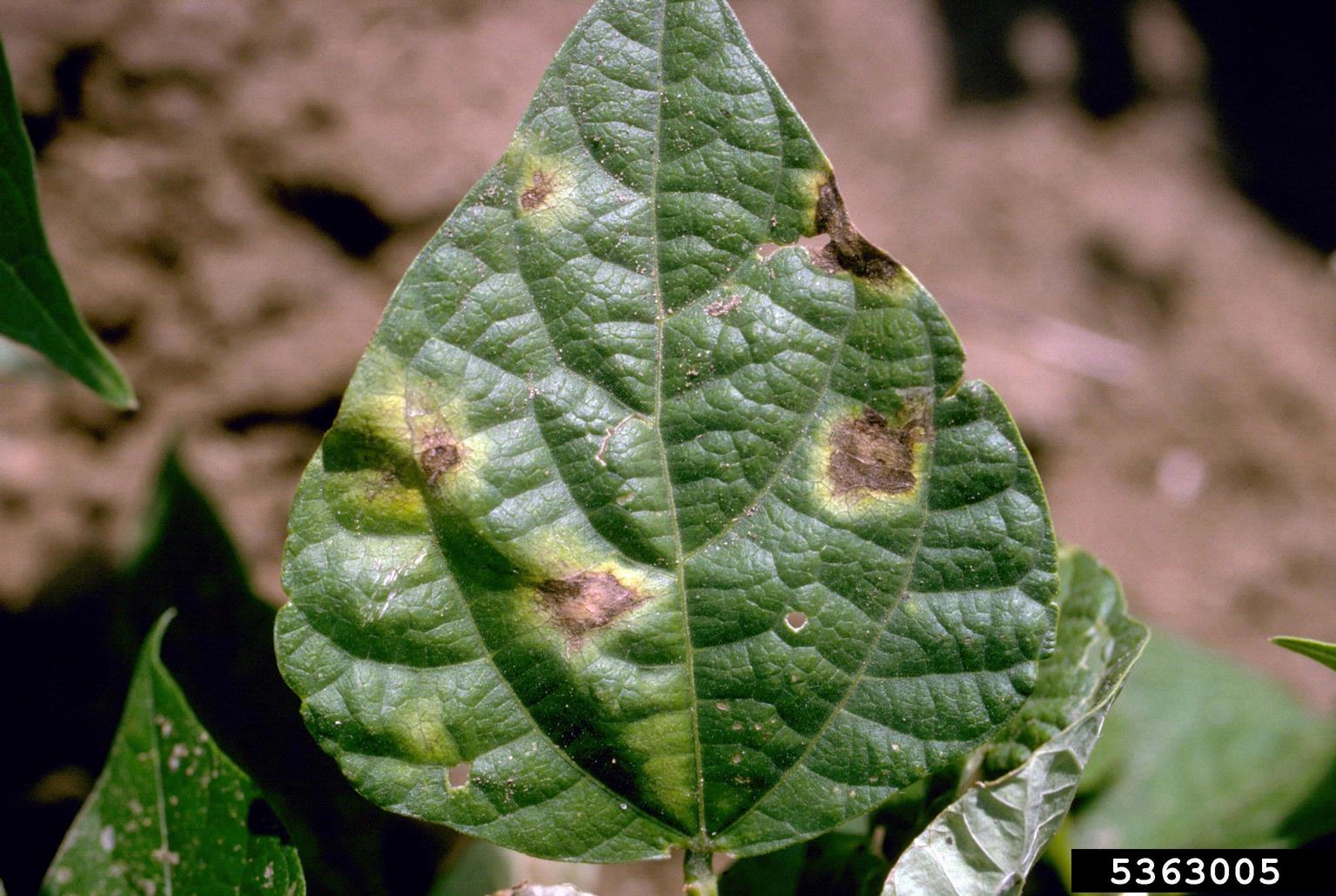Bacterial Bean Diseases: Controlling Common Bacterial Blight Of Beans


Beans are some of the most gratifying vegetables you can have in your garden. They grow vigorously and reach maturity quickly, and they produce new pods all through the growing season. They can fall victim to disease, however, particularly bacterial blight. Keep reading to learn more about bacterial blight of beans and the best methods of bacterial bean blight treatment.
Bacterial Blight of Beans
There are typically two types of bacterial blight affecting bean plants the most – common blight and halo blight.
Common blight
Common blight in beans is the most prevalent of bacterial bean diseases. Also called common bacterial blight, it shows up in misshapen leaves and pods. The leaves first start to develop small wet lesions that grow in size and dry out, usually becoming over an inch (2.5 cm.) wide, brown, and papery, with a yellow border. These spots usually stretch to the edges of the leaves. The pods develop similar wet patches that then dry and shrivel, and the seeds inside are usually small and malformed. Common blight is often spread through moisture. The easiest and most effective way to prevent its spread is to avoid coming into contact with your plants while they’re wet. It’s also a good idea to control weeds and pests, like beetles and whiteflies, which are known to spread the bacteria. Controlling common bacterial blight of beans isn’t always easy. If a plant does become infected, it may be best to remove and destroy it to prevent further spread.
Halo blight
Halo blight is the second of the major bacterial bean diseases. Its symptoms are similar to those of common blight and begin as small wet lesions on the leaves. The lesions will turn red or brown and are surrounded by a much larger yellow ‘halo.’ Unlike with common blight, these lesions stay very small. The pods are affected in much the same way as with common blight. Prevention and treatment methods are basically the same as well-- try to keep foliage dry and don’t touch it when it’s wet. Try not to wound the plants, as this is how the bacteria gets inside. Keep weeds and pests to a minimum. As with treating common blight in beans, destroy affected plants. Spraying copper-based bactericides should stop the spread of bacteria and is a good preventative measure for containing eventual outbreaks of both types of bacterial blight of beans.
Gardening tips, videos, info and more delivered right to your inbox!
Sign up for the Gardening Know How newsletter today and receive a free copy of our e-book "How to Grow Delicious Tomatoes".

The only child of a horticulturist and an English teacher, Liz Baessler was destined to become a gardening editor. She has been with Gardening Know how since 2015, and a Senior Editor since 2020. She holds a BA in English from Brandeis University and an MA in English from the University of Geneva, Switzerland. After years of gardening in containers and community garden plots, she finally has a backyard of her own, which she is systematically filling with vegetables and flowers.
-
 Looking For Plants To Give You The Soft And Fuzzies? Try These 5 Fuzzy Leaf Plant Options
Looking For Plants To Give You The Soft And Fuzzies? Try These 5 Fuzzy Leaf Plant OptionsLovers of texture, drama, silver foliage and tactile plants will adore these special sensory garden additions. These fuzzy leaf plant options will leave you all aglow
By Susan Albert
-
 Get Ready For A Summer Of Hummers! Grow These Full Sun Hummingbird Plants and Flowers
Get Ready For A Summer Of Hummers! Grow These Full Sun Hummingbird Plants and FlowersIf you’re lucky enough to enjoy a sunny backyard, make sure you are maxing out on your pollinator opportunities and grow these full sun hummingbird plants and flowers
By Tonya Barnett